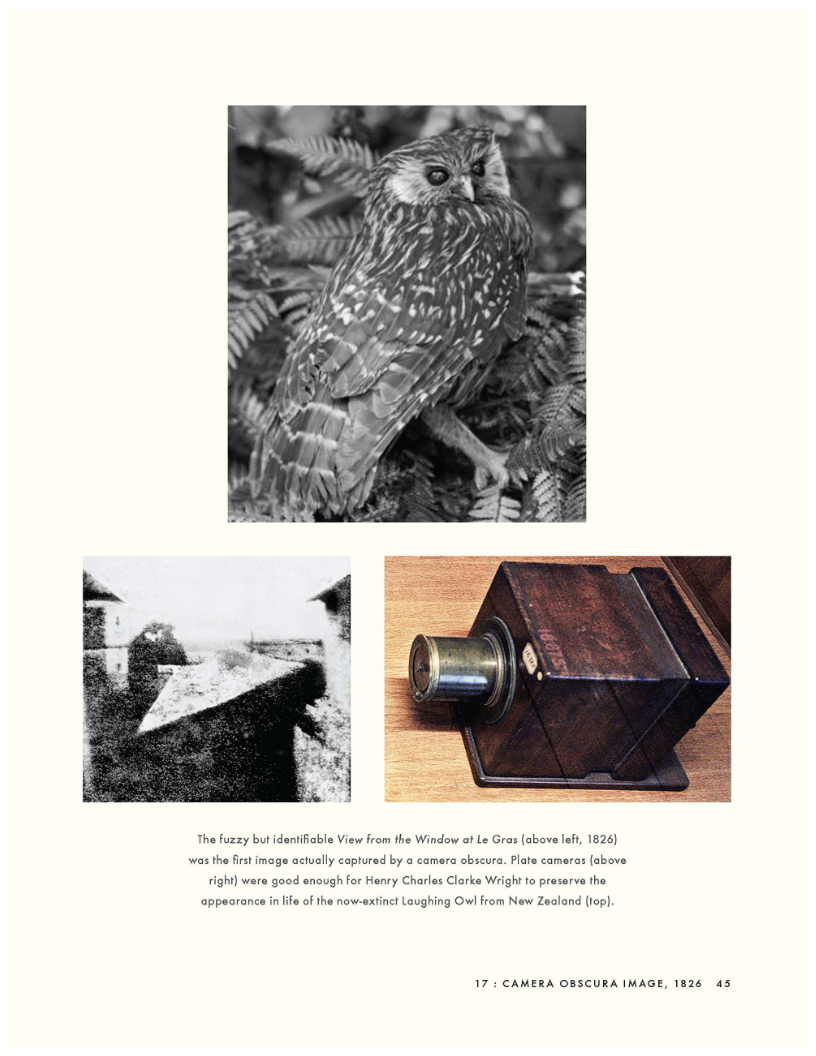
A History of Birdwatching in 100 Objects by David Callahan takes you through time, starting with early depictions of birds in ancient artwork to the development of modern-age technology. This is a delightful read as you peruse through the history of birdwatching through 100 objects selected for their significant contributions to the birding world. It has a hybrid feel of a charming coffee table book mixed with a series of quick, thought-provoking history lessons. I could picture this as being a great museum display in a timeline form, yet here it is readily available at your fingertips.
The book provides quick 1.5 to 2 page snippets of interesting information and photos of objects related to birding in some way. One hundred objects is a lot to go through, but Callahan does a great job of giving you the “elevator speech” version of the history and description of an object to make you feel generally satisfied and well-informed with the fun facts you learn, yet piquing your interest to encourage you to possibly seek out even more information should you so desire. Although the book was published in England and has a few objects more related to British birding, it definitely has cross-cultural appeal and is relatable to birding audiences around the globe.
 Some of the objects listed are not directly related to birding, but represent a symbol of a person or thing that led to the advancement of birding. Inevitably, the book highlights the co-evolution of birding and technology – showing how advancements in technology have really brought birding into its current state. Technology, including seemingly simple things now, like the telephone and the answering machine, has made birding more accessible and gave twitchers and chasers the edge in getting the info they need to find that golden bird. The airplane, the television, and the newspaper made birds more tangible and people took notice. The telephone and bird alert pagers jump started the modern era of reporting bird sighting information quickly, but the internet exponentially increased visibility and awareness – from birding organizations’ websites and bird blogs like this one to sites like eBird to input sightings and keep track of citizen science data. And MP3 players and the iPhone made bird songs and data portable and instantly available.
Some of the objects listed are not directly related to birding, but represent a symbol of a person or thing that led to the advancement of birding. Inevitably, the book highlights the co-evolution of birding and technology – showing how advancements in technology have really brought birding into its current state. Technology, including seemingly simple things now, like the telephone and the answering machine, has made birding more accessible and gave twitchers and chasers the edge in getting the info they need to find that golden bird. The airplane, the television, and the newspaper made birds more tangible and people took notice. The telephone and bird alert pagers jump started the modern era of reporting bird sighting information quickly, but the internet exponentially increased visibility and awareness – from birding organizations’ websites and bird blogs like this one to sites like eBird to input sightings and keep track of citizen science data. And MP3 players and the iPhone made bird songs and data portable and instantly available.There are some items that may make you cringe with discomfort or shake your head – like the swiftlet’s nest which has been overharvested as a Asian delicacy or the bird-nesting pots with “robber holes” to snatch the eggs and chicks of oblivious sparrows and starlings, again, for delicacy consumption. But as the book notes, it’s items like these and trendy items like an egret plume hat that really brought upon the conservation movement to protect the very birds that humans put in danger of extinction. And then there are other objects are just so wildly bizarre and fascinating, like the “Hummingbird cabinet of curiosities,” which sounds more like something you’d find in a Lemony Snicket story.
The scientist in me appreciated the objects demonstrating the use of high tech methods for bird identification, such as using a mass spectrometer to determine the abundance of certain isotopes to indicate the origin of a sample, figuring out if a bird is a natural vagrant or perhaps an escapee. Tools for DNA analysis can take seemingly identical birds and allow us to distinguish them as distinct species.
With the shift from the shotgun to the binoculars and camera, A History of Birdwatching in 100 Objects shows you how birdwatching has transformed to be not just a sport, but a hobby that encourages scientific exploration and artistic expression. To be able to condense birdwatching history was probably not an easy feat, but it was done in a fun yet informative way. This is definitely a pleasurable read, and I think birders will enjoy it and relate to it, and it may intrigue non-birders or bird appreciators who flip through it to possibly look at birding in a new light after seeing how art, history, and technology have really grown and co-evolved with birding.

No comments:
Post a Comment